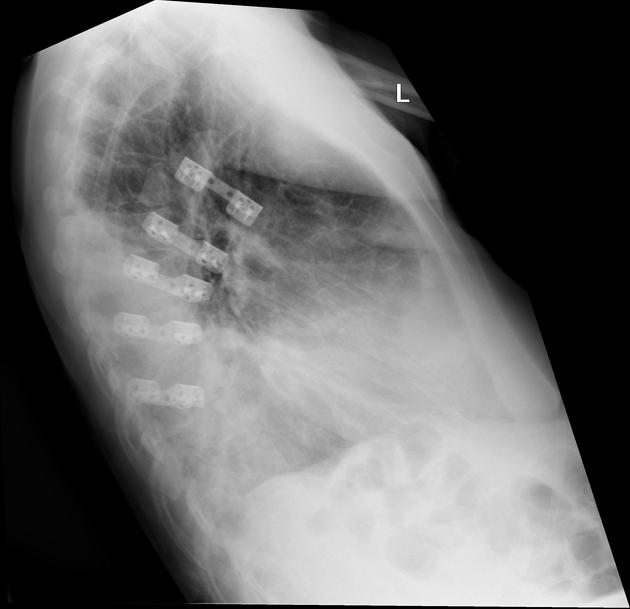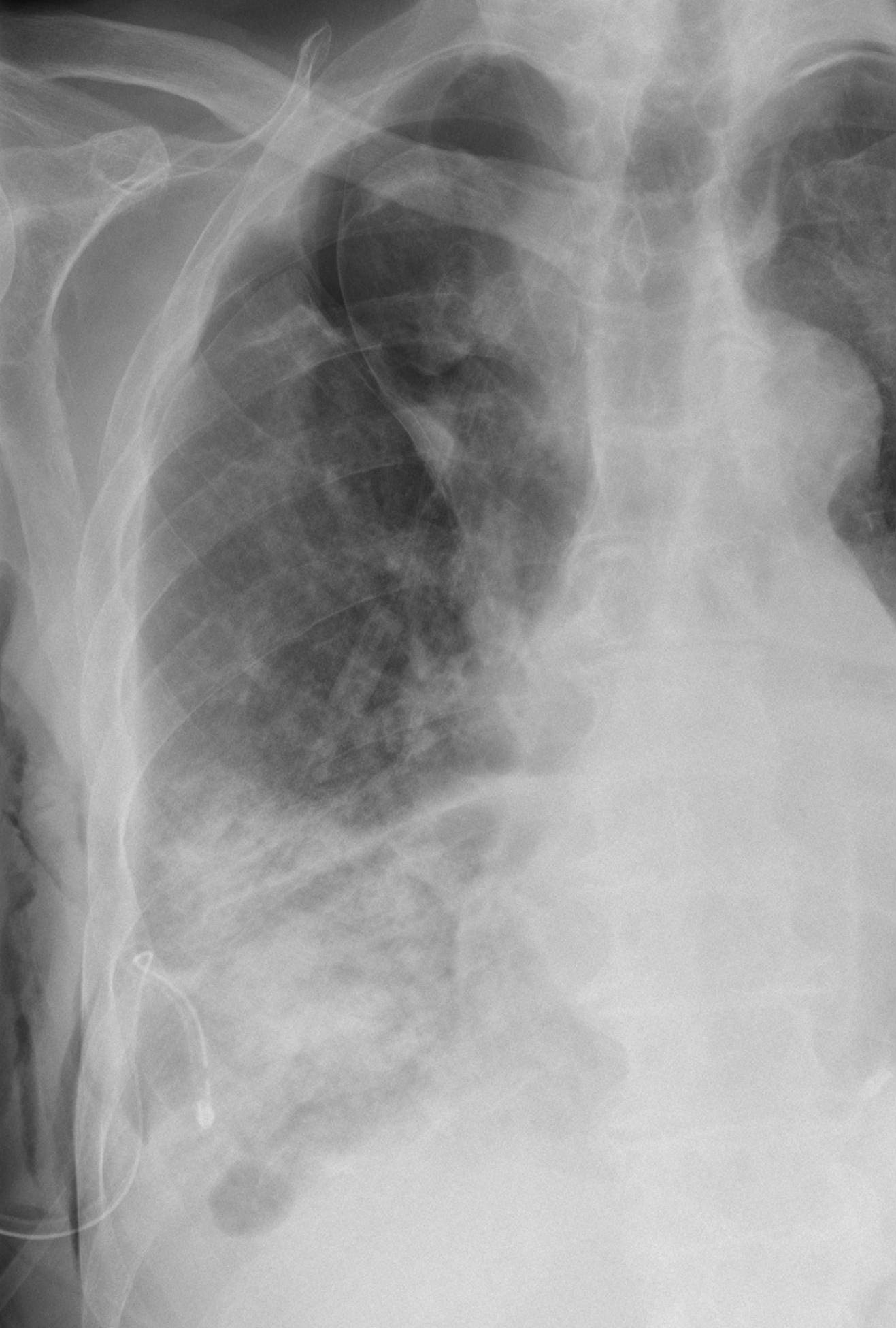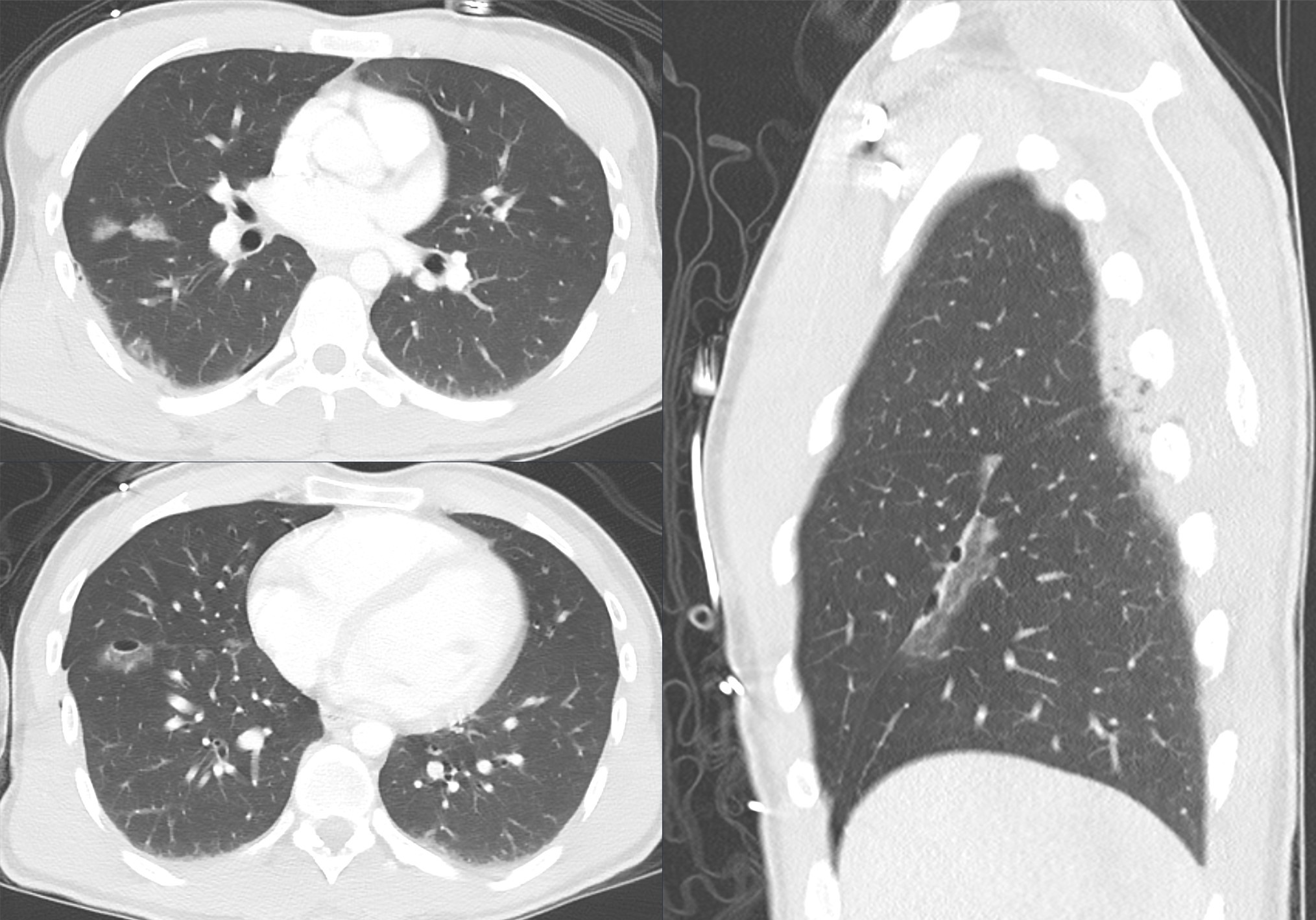flail chest







Flail chest or flail thoracic segment occurs when three or more contiguous ribs are fractured in two or more places. Clinically, a segment of only one or two ribs can act as a flail segment, hence there is some controversy between the clinical and radiological definitions.
Clinical presentation
Clinically, this is observed in a non-ventilated patient as a paradoxical movement of the flail segment. It can often be clinically occult . Its significance lies in the fact that it can lead to severe ventilation difficulties, especially in the peri-intubated patient.
Pathology
A flail chest is predominantly regarded as a marker for chest trauma severity and is almost always associated with other thoracic injuries, which are also major contributors to respiratory insufficiency, such as :
If there are bilateral rib or costal cartilage fractures and the sternum can move independent from the rest of the chest wall, the term flail sternum is used.
Rarely the flail segment of the chest wall may collapse in (medially), termed a stove-in chest which is associated with even higher morbidity and mortality .
Etiology
Flail chest is most commonly associated with high-impact thoracic blunt trauma and results from severe anteroposterior compression found in motor vehicle collisions, blast or crush injuries .
Radiographic features
Plain radiograph
A chest x-ray is less sensitive than CT for the diagnosis of flail segments :
- defined as ≥3 adjacent ribs with segmental fractures and/or >5 adjacent rib fractures
- traumatic 1st rib fracture: marker of severe chest trauma, as the rib is protected by the clavicle and scapula
- 10% with aortic transection, 2% associated with bronchial tear
- non-traumatic 1st rib fracture: low occurrence of major vascular injury
- 10% with aortic transection, 2% associated with bronchial tear
- costal hook sign: elephant trunk-shaped ribs owing to rotation of segmental fractures
Treatment and prognosis
Flail chest is usually managed supportively, with adequate analgesia and chest physiotherapy to assist with volume expansion, and secretion management to prevent secondary complications of atelectasis and pneumonia . 'Internal splinting' with positive pressure ventilation can help and select cases can be treated surgically by internal fixation .
Differential diagnosis
- rib fracture(s) without flail complication
- thoracostomy tube
- pathological rib fracture
Siehe auch:
- Pneumothorax
- Weichteilemphysem
- Lungenkontusion
- Paradoxe Atmung
- sternocostale Luxation
- costal hook sign
- Lungenlazeration
und weiter:

 Assoziationen und Differentialdiagnosen zu flail chest:
Assoziationen und Differentialdiagnosen zu flail chest:



